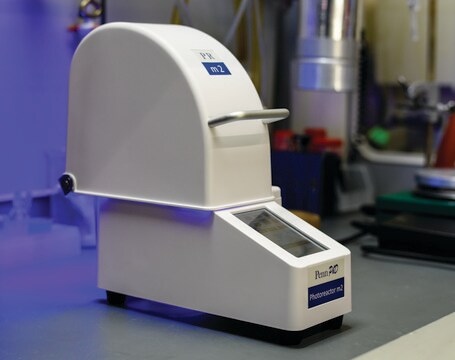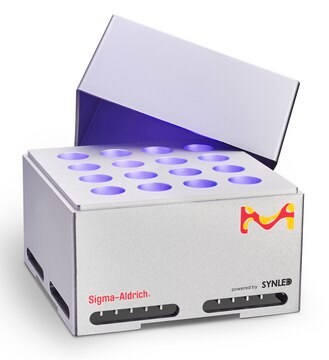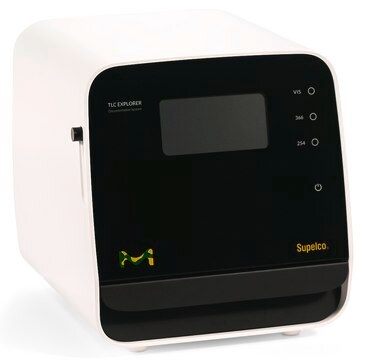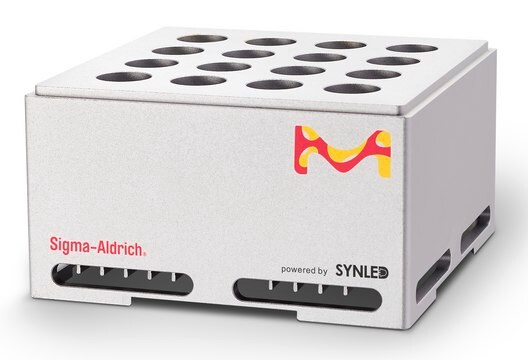Z744033
450nm Light Source
Synonym(s):
450nm LED Light Module
About This Item
Recommended Products
reaction suitability
reaction type: Photocatalysis
reagent type: catalyst
Related Categories
General description
- Features and Benefits of Penn Penn PhD Photoreactor M2
- Modular design allows for use with a variety of wavelengths 365nm – 450nm
- 360 degree reflective environment maximizes surface area photon capture
- Light shield interlock prevents user exposure to harmful light rays
- Interactive touch screen controls reaction parameters
- Intertek ETL, CE, and CB approved
- User defined parameters including temperature, light intensity, fan speed and stirring
- Auto stop, pause and reset options
- Supports vial sizes gc, 4, 8, 20, 40 ml
- Temp feedback using a k-type thermocouple
Photocatalysis Technology Spotlight
Application
- Biodegradable Plasticizer in Pharma: Used in the synthesis of eco-friendly plasticizers, methyl stearate contributes to biodegradable pharmaceutical formulations, supporting environmental sustainability in medical product development (Shahriar et al., 2024).
- Lipid Synthesis Research: In a study evaluating the methanolic leaf extract of Catharanthus ovalis, methyl stearate′s role as a structural component demonstrates its importance in lipid synthesis research, contributing to understanding complex biochemical reactions (Shompa et al., 2024).
- Reference Standard in Chromatography: As a standard in chromatographic analysis, methyl stearate is crucial for accurate measurement and quality control in pharmaceutical research, ensuring the reliability of analytical results in drug development and testing (Kusar et al., 2024).
related product
Choose from one of the most recent versions:
Certificates of Analysis (COA)
Sorry, we don't have COAs for this product available online at this time.
If you need assistance, please contact Customer Support.
Already Own This Product?
Find documentation for the products that you have recently purchased in the Document Library.
Articles
Csp2- and Csp-hybridized coupling reactions are established catalytic approaches. However, multi-step Csp3- and Csp2-coupling reactions of boronic acids and related derivatives are still limited by ineffective two-electron transmetalation reactions.
While Markovnikov alkene reactivity is very well developed and utilized commonly in the synthesis of commodity and research chemicals, catalytic access to the anti-Markovnikov-selective adducts is a much less-developed endeavor.
Our team of scientists has experience in all areas of research including Life Science, Material Science, Chemical Synthesis, Chromatography, Analytical and many others.
Contact Technical Service






